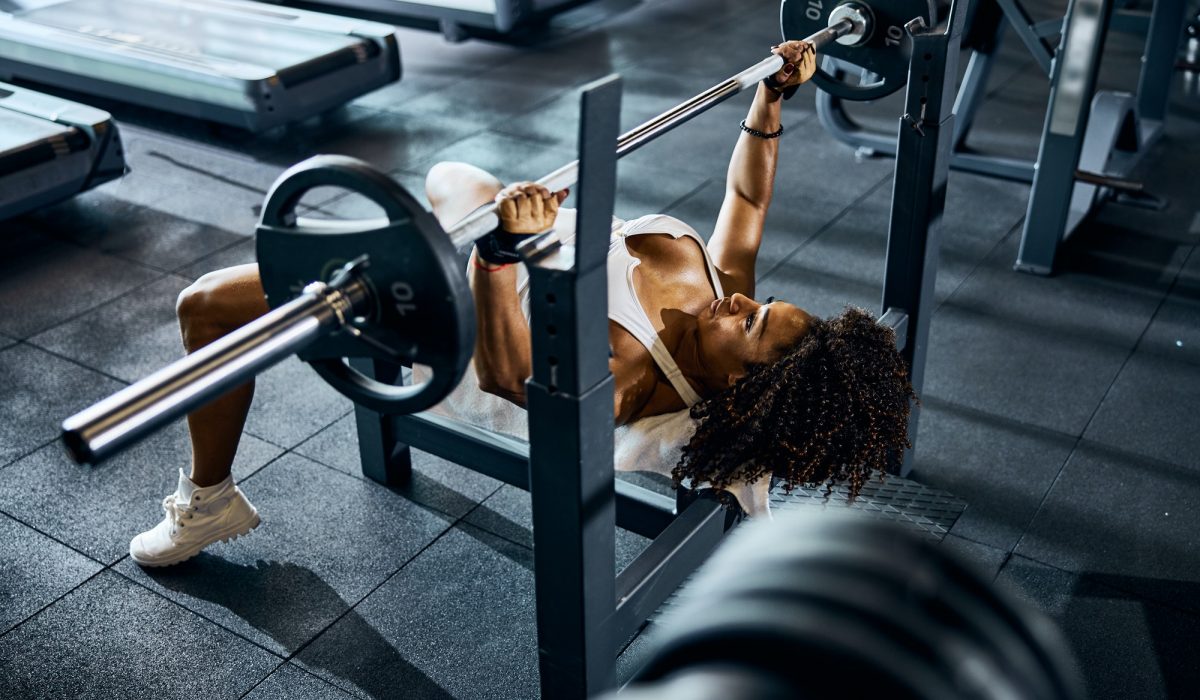Barbell Flat Bench Press Exercises
Muscles involved
MAIN MUSCLES:
pectoralis major, triceps, deltoids (anterior)
SECONDARY MUSCLES:
coracobrachialis, serratus anterior, subscapularis
ANTAGONISTS:
latissimus dorsi, biceps, deltoids (posterior)
EXECUTION
Lie flat on the bench and support your head and back with your hands. Position yourself so that the bar is directly above your eyes, with a symmetrical overhand grip.
Before lowering the bar, inhale and brace your abs. Then, lower the bar until it is just above your chest. Once there, raise it vertically using your arms and breathe in as you do so. Exhale as you lift the bar back up to its supports.
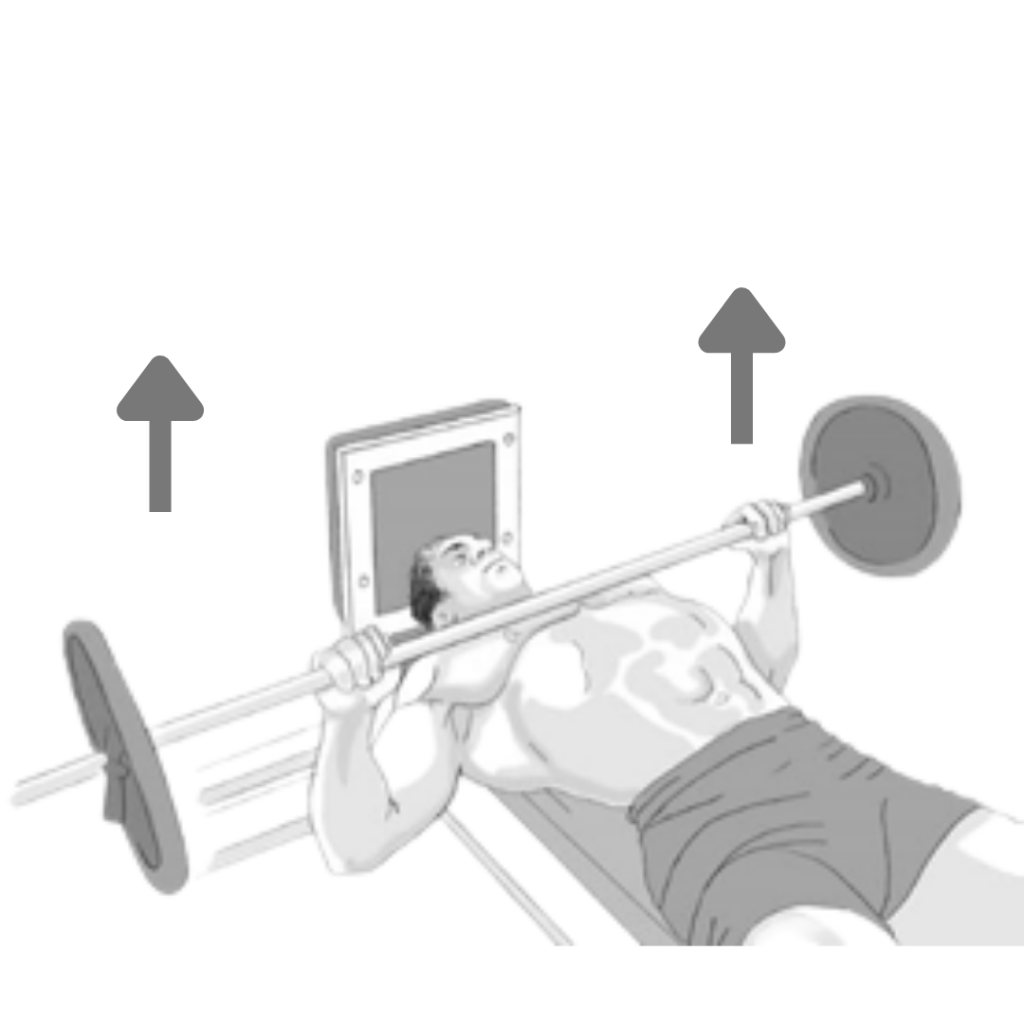
VARIATION: CLOSE GRIP / HANDS TOGETHER
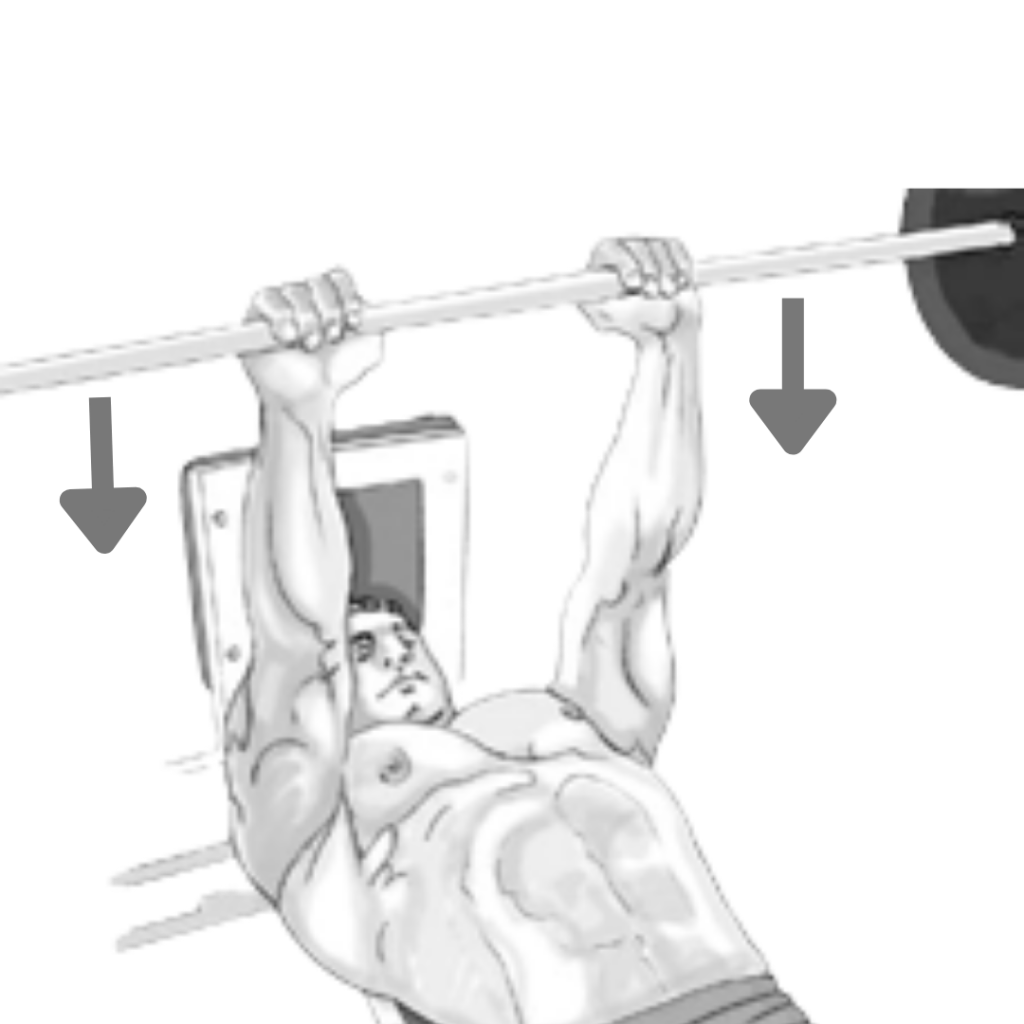
MUSCLES USED: triceps, pectorals and deltoids (anterior)
TECHNIQUE
The basic triceps exercise is the same, but the hands are kept only about 20 cm apart. As a result, the triceps takes over a part of the work done by the pectoral muscle. If you have problems with your wrists, use a lighter weight than in this exercise.
VARIATION: WIDE GRIP / HANDS APART
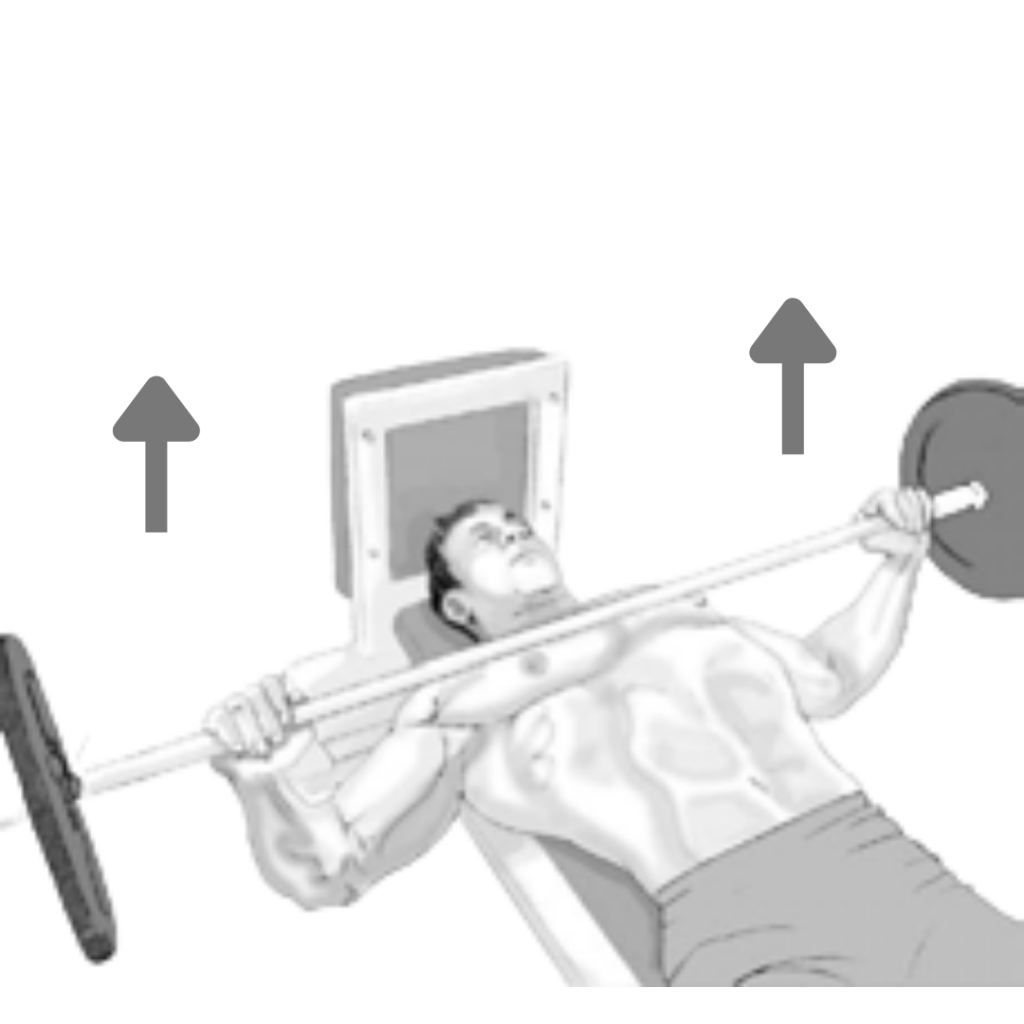
MUSCLES USED
pectorals, deltoids (anterior) and triceps
TECHNIQUE
The technique for this variation is the same as the original, except that you have a greater separation between your hands. This will take some of the strain off your triceps and allow you to lower the bar more easily.
VARIARTION: CLOSE GRIP WITH ELBOWS IN
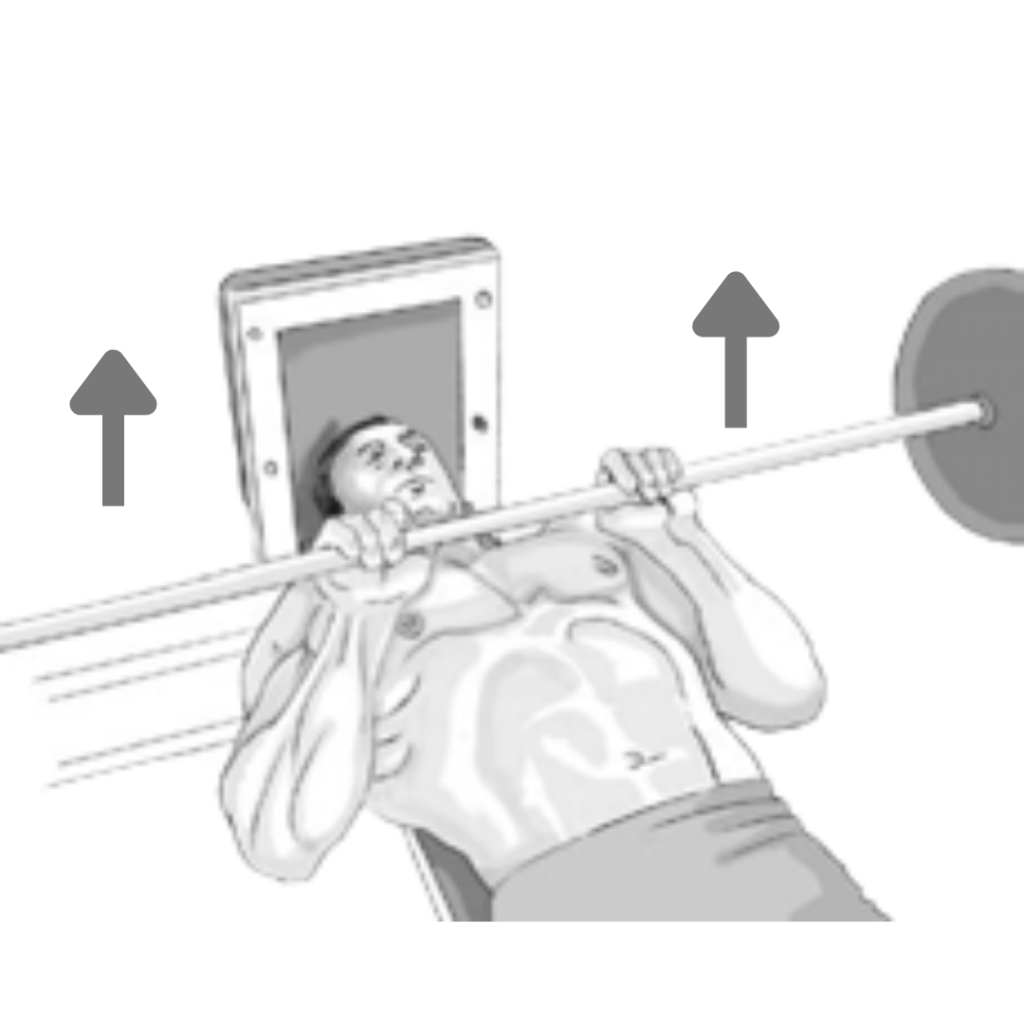
MUSCLES USED
deltoids (anterior), triceps and pectorals
TECHNIQUE
The close-grip bench press is performed by keeping the elbows close to the trunk and pressing down toward the lower ribs with a weight held in both hands. This variation shifts some of the work done by chest muscles onto shoulder and triceps muscles, making it a heavier version of one of the most commonly performed exercises.
NOTE
This is an exercise that requires concentration and a bit of assistance. If the bench is high, it’s a good idea to position your feet on a step to avoid excessive curvature of the lower back. However, the most important thing is stability; you should arch your back only if you have difficulty with the last repetition and you don’t have help from another athlete. Make sure to leave the bar in its supports when you finish.
The biceps also take the strain in the bench press. This is just one of the many examples where a muscle can help its antagonist depending on which part of the body is focused on and other factors.
Common Mistake
Arching the back: when arching the back, bouncing the bar off the chest, lowering it toward the neck or abdomen, and moving the feet too far forward are all problems that can occur. Excessive or insufficient weight can also be a problem. Locking your elbows at the apex of the movement can also lead to problems.
CAUTION
Muscle imbalances in the torso can cause kyphosis (a roundening of the upper back due to outward curvature of the spinal column), among other problems. To avoid these issues, your workouts should be evenly spread throughout all regions of the torso, including both anterior and posterior muscles as well as laterally.


